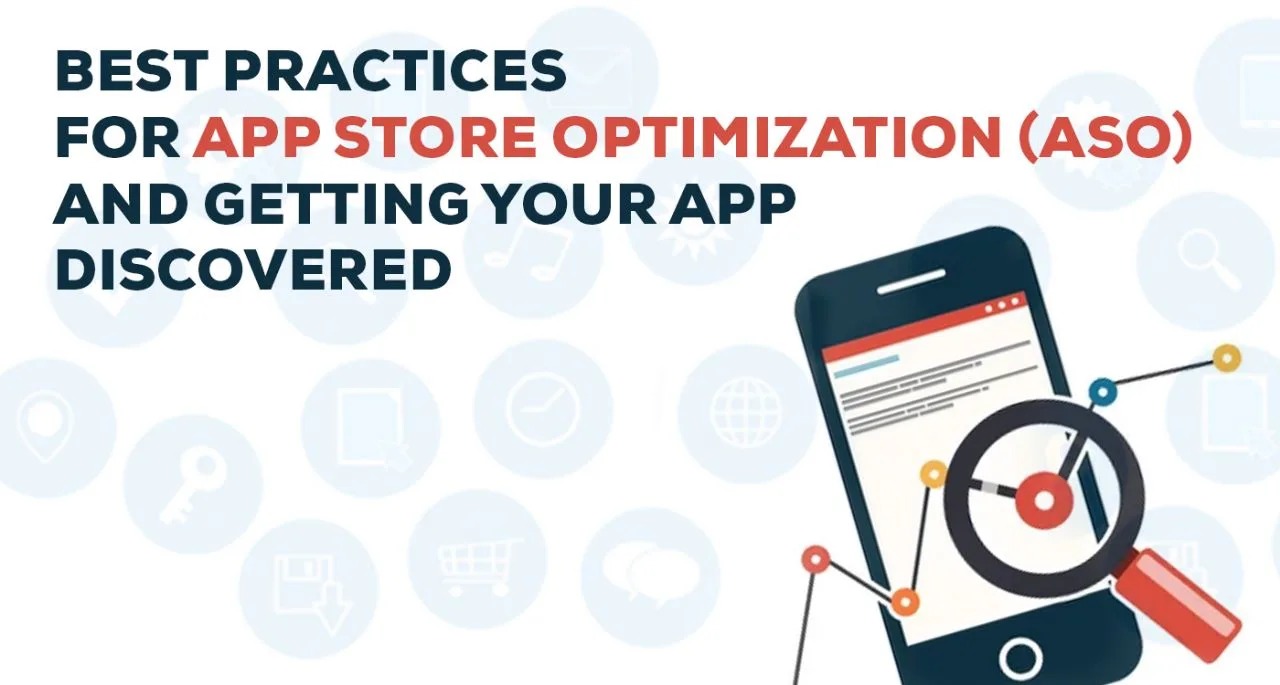Introduction
In today’s digital age, mobile applications have become integral to our lives. Mobile apps have made our daily tasks easier and have transformed the way we communicate, entertain, and do business. With the increasing number of mobile apps, it has become difficult for developers to make their apps visible and easily discoverable in app stores. This is where App Store Optimization (ASO) comes into play.
Explanation of App Store Optimization:
App Store Optimization, commonly known as ASO, is the process of optimizing mobile apps to rank higher in an app store’s search results. App store optimization aims to increase the visibility and discoverability of an app in the app store by improving its ranking and ultimately increasing downloads.
App store optimization includes a set of techniques that app developers and marketers use to optimize the app’s metadata, such as the title, description, keywords, screenshots, and reviews, to make it more appealing and relevant to potential users.
Importance of ASO for app discovery:
The app store is the primary source for users to discover and download mobile apps. According to Statista, the number of apps available in the Apple App Store as of the first quarter of 2021 was 1.96 million, and Google Play Store had around 2.87 million apps.
With such a huge number of apps available, it’s critical for app developers to optimize their apps for visibility and discoverability. A well-optimized app can rank higher in app store search results, leading to increased downloads, improved user engagement, and ultimately, higher revenue.
A brief overview of the article:
In this article, we will discuss the importance of App Store Optimization (ASO) for app discovery. We will start by explaining what ASO is and how it works. We will then highlight the importance of App store optimization for app developers and why they should invest in it.
Finally, we will provide some best practices for ASO and discuss how to measure the success of an App store optimization campaign. By the end of this article, you will have a good understanding of the benefits of App store optimization and how it can help your app rank higher and increase downloads.
App Store Optimization (ASO) is crucial for the success of any app on the app stores. It involves optimizing various aspects of an app’s presence on the app stores to improve its visibility, ranking, and ultimately, its download rate. One of the most important aspects of ASO is keyword research.
Keyword Research:
Keyword research is the process of identifying the words and phrases that people use to search for apps on the app stores. It involves finding the most relevant and popular keywords that are related to your app’s category, features, and benefits. Once you have identified these keywords, you can optimize your app’s metadata and content to include them, which will improve its visibility and ranking on the app stores.
Importance of Keyword Research for ASO:
Keyword research is important for ASO because it helps you understand the language that your target audience uses to search for apps. By identifying the most relevant keywords for your app, you can optimize your metadata and content to make it more visible to your target audience. This can lead to higher visibility, better ranking, and ultimately, more downloads.
How to Find the Right Keywords for Your App:
To find the right keywords for your app, you can start by brainstorming a list of keywords that are relevant to your app’s category, features, and benefits. You can also look at the keywords that your competitors are using and identify the ones that are relevant to your app. Once you have a list of keywords, you can use keyword research tools to determine their popularity, competitiveness, and relevance.
Tools for Keyword Research:
There are several tools available for keyword research, both free and paid. Some of the popular ones include:
- Google Keyword Planner: This tool is free and allows you to find the most relevant keywords for your app based on search volume and competition.
- Sensor Tower: This is a paid tool that provides comprehensive data on app store keywords, including search volume, competition, and difficulty.
- App Annie: This tool provides market data and insights, including keyword research, for app developers and marketers.
- Mobile Action: This is a paid tool that provides data on app store keywords, as well as other ASO metrics such as app downloads, ratings, and reviews.
On-Metadata Optimization

App Store Optimization (ASO) is a crucial part of mobile app marketing. One of the key aspects of ASO is On-Metadata Optimization. On-Metadata Optimization refers to the optimization of various elements of an app’s metadata, including the title, description, and keywords field. In this article, we’ll delve into the importance of On-Metadata Optimization and best practices for optimizing the title, description, and keywords field.
Title
-
Importance of title for ASO
The title is one of the most important elements of an app’s metadata. It is the first thing that potential users will see when they come across your app in the app store. A well-crafted title can help your app stand out and attract more downloads. In addition, the title is a key factor in determining where your app appears in search results.
-
Best practices for creating a title
When creating a title for your app, it’s important to keep in mind that it should be concise, descriptive, and memorable. Here are some best practices for creating a title:
- Keep it short and sweet: Try to keep your title under 25 characters, so that it is easy to read and remember.
- Use keywords: Incorporate relevant keywords into your title to help your app rank higher in search results.
- Be descriptive: Your title should give potential users an idea of what your app does or what problem it solves.
- Be unique: Try to come up with a title that stands out from the competition and is memorable.
Description
-
Importance of description for App Store Optimization
The description is another key element of an app’s metadata. It provides potential users with more detailed information about your app, including its features and benefits. A well-crafted description can help persuade potential users to download your app.
-
Best practices for creating a description
When creating a description for your app, it’s important to keep in mind that it should be concise, informative, and engaging. Here are some best practices for creating a description:
- Use bullet points: Break up your description into easy-to-read bullet points to make it more scannable.
- Highlight your app’s features and benefits: Use your description to showcase what sets your app apart from the competition and how it can help users.
- Use keywords: Incorporate relevant keywords into your description to help your app rank higher in search results.
- Keep it simple: Avoid using jargon or technical terms that potential users may not understand.
Keywords Field
-
Explanation of keywords field
The keywords field is a section in an app’s metadata where you can include relevant keywords that will help your app rank higher in search results. It is important to include relevant keywords in this field, as it can greatly impact your app’s discoverability.
-
Best practices for using the keywords field
When using the keywords field, it’s important to keep in mind that it should be used strategically. Here are some best practices for using the keywords field:
- Use relevant keywords: Include keywords that are relevant to your app and its features.
- Don’t use irrelevant keywords: Avoid using keywords that are not relevant to your app, as this can negatively impact your app’s discoverability.
- Don’t use too many keywords: App Store guidelines typically recommend using no more than 100 characters in the keywords field.
- Don’t repeat keywords: Avoid using the same keyword more than once, as this will not help your app rank higher in search results.
Monitoring and Iteration

Importance of Monitoring and Iteration for App store optimization
App Store Optimization (ASO) is not a one-time process but rather an ongoing effort to improve the discoverability and visibility of an app in the app stores. Once an app is live, it is crucial to monitor its performance regularly and iterate the ASO strategy accordingly. This allows app developers to identify what works and what doesn’t work and make necessary adjustments to improve the app’s performance and increase its chances of being discovered.
How to Monitor ASO Performance
Monitoring ASO performance involves tracking the app’s visibility, downloads, and user engagement. Here are some ways to monitor ASO performance:
- App Analytics: App analytics tools like App Annie and Sensor Tower provide valuable insights into app performance, including the number of downloads, app store views, and user retention rates.
- Keyword Rankings: Tracking the app’s keyword rankings is an essential part of monitoring App store optimization performance. This helps app developers to determine which keywords are driving the most traffic to their app and make necessary adjustments to improve keyword rankings.
- User Reviews: User reviews provide valuable feedback about the app’s performance and user experience. Monitoring and responding to user reviews can help app developers identify issues and make necessary improvements.
Best Practices for Iterating ASO Strategy
Iterating the ASO strategy involves making necessary adjustments to improve the app’s visibility and discoverability in the app stores. Here are some best practices for iterating App store optimization strategy:
- Regular Review: Regularly review the app’s performance metrics and identify areas that require improvement.
- A/B Testing: A/B testing involves testing different versions of the app’s metadata to determine which version performs better. This can include testing different titles, descriptions, and keywords.
- Experimentation: Experiment with different ASO strategies to identify what works best for the app. This can include trying different keywords, optimizing the app’s visuals, and improving user engagement.
Conclusion
Recap of the importance of ASO
App Store Optimization (ASO) is a crucial aspect of any mobile app marketing strategy. With millions of apps available in app stores, it is challenging to get discovered by potential users. App store optimization helps improve the visibility and ranking of an app, making it easier for users to find and download it. The on-metadata elements of ASO, such as the title, description, and keywords field, are essential for improving the app’s ranking and increasing visibility.
Final thoughts and recommendations
ASO is an ongoing process that requires continuous monitoring and iteration. It is crucial to keep up with the latest trends and changes in app store algorithms and user behavior. To maximize the potential of ASO, it is recommended to conduct thorough keyword research, create a compelling title and description, and use relevant and targeted keywords in the metadata.
Additionally, it is important to track the performance of ASO and make iterative changes to the strategy to achieve optimal results. It may take some time and effort to see the desired results, but with a well-planned ASO strategy, it is possible to improve the visibility, ranking, and downloads of an app.

In conclusion, App store optimization is a vital aspect of mobile app marketing that can significantly impact an app’s success. By implementing best practices and continuously monitoring and iterating the ASO strategy, developers and marketers can increase app visibility and attract more downloads, leading to greater success in the competitive app market.
FAQs:
Q: What is App Store Optimization (ASO)?
A: App Store Optimization (ASO) is the process of optimizing mobile apps to rank higher in app store search results. It involves optimizing various elements of an app’s listing such as title, description, keywords, and visuals to make it more appealing to users and increase visibility.
Q: Why is ASO important for app discovery?
A: App store optimization is important for app discovery because it helps increase the visibility and discoverability of your app. By optimizing your app listing with relevant keywords and compelling visuals, you can improve your app’s ranking in app store search results, leading to more downloads and higher visibility.
Q: How do I find the right keywords for my app?
A: Finding the right keywords for your app requires research and analysis. You can start by brainstorming a list of relevant keywords that describe your app and then use keyword research tools to identify which keywords have the highest search volume and the least competition.
You can also analyze your competitors’ app listings to see which keywords they are using and how they are ranking. It’s important to choose relevant and specific keywords that accurately describe your app and its features.











.gif)









Discussion about this post